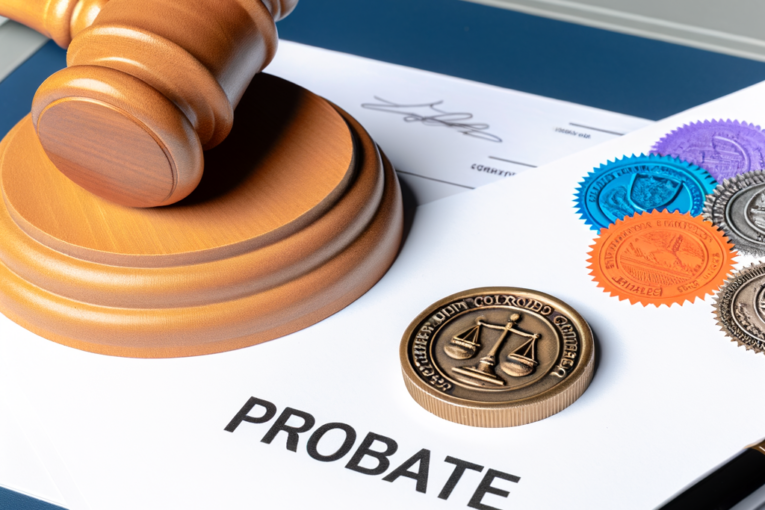Ending a marriage is difficult. When profound disagreements arise over critical issues like finances, child custody, and property division, the path forward can feel uncertain. You stand at a fork in the road, one path leading to a contested divorce and the other to an uncontested divorce. Which route is best?
This guide explores both options in depth, so you can make an informed decision tailored to your situation. We’ll shed light on key factors to weigh, like time, cost, process, and the state of your relationship with your spouse.
Contested Divorce: Arduous Yet Sometimes Necessary
A contested divorce ensues when spouses dispute pivotal issues and resort to litigation. Core disagreements revolve around finances, asset division, debts, child support, custody arrangements, visitation rights, spousal maintenance, and more. With emotions running high and deeply personal matters at stake, finding common ground may prove impossible.
Why pursue this route?
You may opt for a contested divorce if negotiations utterly break down. Say your spouse stonewalls reasonable requests or makes unreasonable demands. Certain spouses exploit the threat of litigation to intimidate, thinking the other party will cave to avoid court.
In other cases, you have serious apprehensions about the effects of proposed agreements on you or your children. Accepting a deficient settlement could harm your future financial security or your children’s wellbeing. Under such circumstances, litigation becomes essential to protect legitimate interests.
Contested Divorce Step-by-Step Process
- Initiating litigation: The process begins by filing divorce paperwork with your local family court outlining requests for property division, custody, support, and more. You must formally serve these filings on your spouse.
- Discovery phase: Over the ensuing months, both parties use legal tools like interrogatories, depositions, subpoenas, and document requests to gather evidence supporting their positions. This process facilitates fact-finding and issue-narrowing.
- Pretrial motions: Your attorney may file motions asking the court to rule on certain matters prior to trial. For example, a temporary support order ensures you or your children have sufficient funds during litigation.
- Settlement negotiations: Despite animosities flaring earlier, the gravity of impending court battles motivates some couples to reach compromises at this stage. Opting for mediation can facilitate settlements.
- Court trial: If no pretrial settlement materializes, the court hears arguments and evidence from both sides concerning unresolved issues. In a bench trial, only the judge decides. In a jury trial, jurors determine factual findings.
- Judgment: Based on applicable laws and trial evidence, the court hands down binding rulings on disputed matters not settled previously, whether finances, custody, or property. This judgment outlines the rights and duties of former spouses going forward.
Implications to Consider
While necessary in some situations, contested divorces inflict major tolls:
- Emotional trauma: airings of private matters and grievances in open court fan flames of acrimony between former partners. And outcomes thrust on you heighten feelings of powerlessness.
- Time consumption: Contested cases often drag on for many months or even years, prolonging pain and uncertainty and holding you back from moving forward.
- Legal expenses: Expect steep attorney fees and court costs from extensive discovery proceedings, filings, and trials. Contested divorces cost several times more than uncontested divorces.
If alternatives exist to resolve issues reasonably outside of court, pursue them earnestly. Litigation should be an absolute last resort. But if vital interests are endangered, legal recourse becomes essential.
Uncontested Divorce: Smoother Sailing Ahead
When you and your partner manage to see eye-to-eye on the terms of dissolving your marriage, you can pursue an uncontested divorce. Also called a simple or amicable divorce, both parties agree on pivotal issues like property distribution and child custody without engaging in drawn-out court battles.
Uncontested Divorce Step-by-Step Process
- Joint petition: You and your spouse together file divorce paperwork containing your agreements on essential issues like asset division, debts, spousal/child support, and custody arrangements.
- Separation agreement: Alongside divorce filings, submit a binding contract between you and your spouse clearly delineating who gets what. This eliminates future disputes.
- Minor paperwork: supply additional documentation like financial affidavits disclosing assets, debts, and income, proof you’ve met residency requirements, and certificates from divorce education classes if mandated in your state.
- Final hearing: You, your spouse, and your attorneys appear before a judge. After reviewing whether the terms are fair and binding and legal requirements are met, the judge approves the agreements and enters a final divorce decree.
Key Benefits
While still painful, uncontested divorces offer major upsides:
- Less adversity: By seeing eye-to-eye from the outset rather than battling over positions, couples avoid escalations of animosity and strain.
- Greater efficiency: With no discovery phase or court trial, uncontested divorces finalize in a few months rather than drag on for years.
- Lower legal expenses: Without extensive discovery motions, court filings, and hearings, attorney fees and costs shrink considerably.
- More control: Rather than putting your fate in judges’ hands, you shape agreements to suit your family’s needs and interests best.
- Improved relations: respectful conflict resolution prevents burned bridges between co-parents, essential for effectively co-parenting children post-divorce.
How to Decide What’s Best for You
As you stand at the fork in the road between contested and uncontested divorce, scrutinize your situation to chart the wisest course.
- Can you and your partner negotiate reasonably to reach agreeable compromises? If so, pursue a settlement through mediation.
- Do disputes revolve around minor issues? Or do core disagreements jeopardize vital interests?
- How will protracted legal conflicts impact children already reeling from the divorce?
Ask candid questions about what matters most, day-to-day and long-term. Consult divorce attorneys about options and potential outcomes. Seek counseling to enhance self-awareness.
There’s no universal right or wrong path—just the one that best balances justice and self-protection with efficiency and healing. Choose mindfully and travel hopefully.
The end of a marriage marks a painful yet pivotal juncture. As you stand at the fork between an arduous contested case and a smoother uncontested process, reflection and wisdom can illuminate the best way forward. Measure both paths: litigation as a shield to safeguard legitimate interests versus compromise for efficiency and closure. With a greater understanding of these alternatives, you can navigate the twisty road ahead with clarity and courage.





